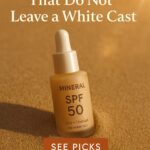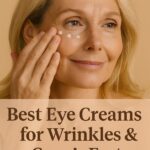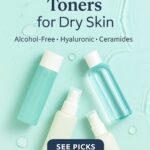
Protect delicate skin with formulas and tips that keep irritation away.
The skin on your eyelids is thin and reactive, which is why some sunscreens burn or water your eyes. You do not have to choose between sun safety and comfort. With the right filters, formats, and application tricks, you can shield lids and under-eyes without tears.
Quick Decision Rules
- Pick broad-spectrum SPF 30+ every day. Reapply about every 2 hours when outdoors. U.S. Food and Drug Administration
- For sting-free wear, start with 100% mineral filters near eyes (zinc oxide, titanium dioxide).
- Choose fragrance-free and alcohol-free formulas for the eye area.
- Use sticks, balms, or tinted mineral creams to keep product from migrating.
- Add UV-blocking sunglasses to protect the eyes and eyelids themselves. AAO
Why Some Sunscreens Sting
- Chemical filters can migrate with sweat and irritate the conjunctiva.
- Fragrance and certain solvents raise sting risk on thin skin.
- Rubbing watery lotions too close to the lash line pulls product into the eye.
- Heat and sweat increase migration. Plan formats that stay put.
Formulas That Are Kinder To Eyes
- 100% mineral near eyes: zinc oxide and titanium dioxide are gentler and less likely to sting.
- Stick or balm textures: waxy bases resist migration into the eye.
- Tinted mineral creams: double as under-eye brightener while adding SPF.
- Powder SPF for touch-ups: helpful over makeup, but pair with a base layer since powders alone are easy to under-apply.
Where and How To Apply (No Tears Method)
- Prep: pat a thin layer of plain moisturizer on lids and under-eyes so SPF glides without tugging.
- Place: dot mineral SPF on brow bone, orbital bone, and outer corners. Avoid the wet rim and lash roots.
- Blend outward and upward with a tapping motion. No rubbing.
- Lock: if you are prone to migration, set the area with a touch of translucent powder.
- Shield: add wraparound or close-fit sunglasses labeled 100% UV to protect the eyelids and the eyes. AAO
- Reapply smart: use a mineral stick or powder brush around eyes so you do not disturb makeup. Reapply about every 2 hours outdoors. U.S. Food and Drug Administration
Formats That Work Well Around Eyes
- Mineral sticks (SPF 30–50): swipe on orbital bone and blend edges. Great for sports and school runs.
- Tinted mineral eye SPF: made for the eye contour with less slip.
- Mineral face lotion: use sparingly around eyes, then set.
- Powder SPF brush: quick, clean touch-ups over concealer and shadow.
Sweat, Contacts, and Makeup Tips
- Heavy sweaters: prefer sticks and balms. Keep a travel stick in your bag.
- Contact lens wearers: apply, wait 10 minutes, then insert lenses to avoid transfer.
- Makeup wearers: let SPF set 5 minutes. Use cream shadows or a light powder set so SPF underneath stays put.
Kid and Teen Notes
- Choose fragrance-free mineral sticks for busy days. Teach a “C-shape” swipe around the orbital bone, not on the waterline.
- Add a hat and kid-fit sunglasses for recess and sports. Reapply at lunch or after practice.
When To Sample Different Options
- Burning or watering persists: try a different mineral brand, a stick format, or a balm with fewer slip agents.
- Eczema or dermatitis on lids: keep to simple mineral filters and avoid fragrance. If irritation continues, check with a clinician.
Final Thoughts
Comfortable eye sun protection is possible. Keep it mineral near the eyes, choose formats that do not run, place product on the orbital bone, and back it up with UV-blocking sunglasses. Reapply with a stick or powder so your makeup stays put and your eyes stay calm.
See also
Sensitive skin around the eyes often needs gentle support. Our Ceramide Moisturizers for Damaged Skin Barrier explains how to calm and fortify the area before SPF. If you want a mineral look that stays elegant on deeper tones, Mineral Sunscreens That Do Not Leave a White Cast walks through tints and textures that disappear on skin.
Building a full routine for comfort, Best Exfoliators for Sensitive Skin shows low-irritation options to avoid stingy over-exfoliation. For day-to-day SPF by skin type, see Best Face Sunscreen for Acne-Prone Skin for light, non-greasy picks. Curious about active ingredients around eyes at night, Retinol vs Retinal: Which One to Start With explains gentler choices and pacing.
FAQs
1) Can I put sunscreen directly on my eyelids
Yes, but keep it on the eyelid skin and away from the waterline. Mineral formulas are least likely to sting.
2) What SPF number do I need around eyes
Use broad-spectrum SPF 30 or higher and reapply outdoors about every 2 hours.
3) Do sunglasses replace sunscreen on lids
No. Sunglasses protect the eyes and reduce UV on the lids, but SPF on the skin plus UV-blocking sunglasses is ideal.
4) My eyes water with every sunscreen. What now
Switch to a fragrance-free, 100% mineral stick or tinted mineral eye SPF and set lightly with powder. If watering persists, try a different brand or see a clinician.
5) How do I reapply over makeup without smearing
Use a mineral stick tapped around the orbital bone or a powder SPF brush. Press, do not rub.
Affiliate Disclosure
If you purchase through links on our site, we may earn a small commission at no extra cost to you.




